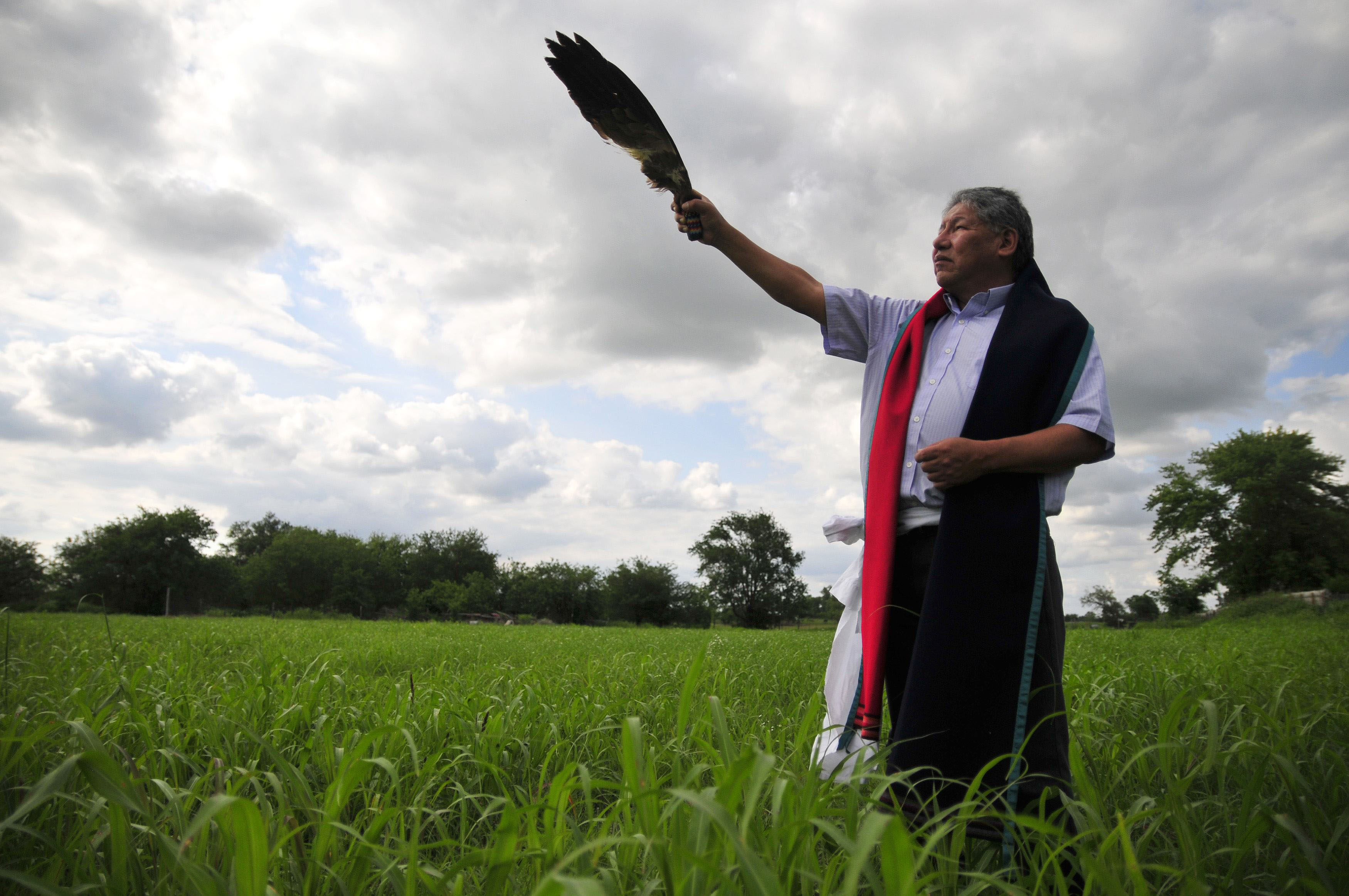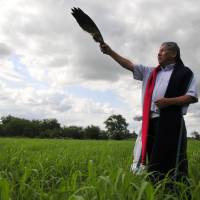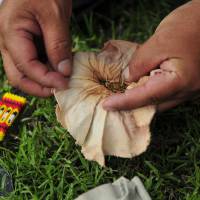Just over a year ago, tribal elder Gordon Yellowman watched on the TV news as a giant tornado roared toward the homes of his Cheyenne-Arapaho people in Oklahoma.
Sirens blared, warnings were issued and many people rushed to shelters as the weather radar warned that the funnel cloud brewing would be massive and deadly.
But Yellowman and a small group of elders huddled to perform an ancient ritual that would turn the tornado away.
"We spoke to it in our language," he said.
After the ceremony, whose details are hidden from outsiders to protect its potency, the tornado took an unexpected turn and veered away from the Native American tribe — a move not part of any computer modeling for the twister.
The El Reno tornado on May 31, 2013, was one of the widest recorded, at 2.6 miles (4.2 kilometers), and killed eight motorists — four of them so-called storm chasers. It hit just days after a tornado killed 24 people in the Oklahoma City suburb of Moore.
Although there are no scientific data to prove it, the rituals seem to work.
Officials in tornado-prone Oklahoma said Indian lands have suffered less damage over the past 60 years from twisters that have destroyed tens of thousands of structures in other parts of the state.
Native American lands are not immune. In April, a tornado touched down on land of the Quapaw Tribe of Oklahoma, damaging about 30 homes and buildings. In May 2010, a few homes were damaged by a tornado on land managed by Absentee Shawnee Tribal Housing Authority, the state's Bureau of Indian Affairs said.
Tornadoes are easy to predict if one pays attention to natural signs, Yellowman said.
"Nature will tell you," said Yellowman, who is also a sun dance priest of his tribe. "The land talks to the Cheyenne, tells us that a tornado is coming."
The leaves of the trees whisper warnings, he said, flipping themselves over in supplication to the angry skies. The birds warn by quieting their songs. Livestock file to far ends of fenced-in fields to escape a storm they know is coming.
The Cheyenne-Arapaho people do not leave everything to chance and have built tornado shelters for protection.
At their sprawling complex near the Lucky Star Casino in Concho is Oklahoma's first native-owned television station, CATV-47, which airs weather warnings.
Tornado shelters have been built on the lands of Native American groups that can afford them. The state is working to help finance shelters in less economically vibrant places, including those belonging to Native Americans.
The key to limiting damage, Yellowman says, is communicating with the tornado.
"He tells us how many lives he will take and how destructive he will be. But he remembers the rituals and the language. Tornadoes are not evil; they reset the balance in nature," Yellowman said.
He compares his tribe's ability to read and predict the weather to an oral Farmer's Almanac. His people are connected through stories, and he firmly believes the tribes have the spiritual power to protect themselves from dangerous weather.
"We were very strong people," he said. "The Cheyenne were forced out of our home in Minnesota in the 1600s, pushed out of our original homeland by westward expansion, and to survive we had to adapt. The first challenge we had to adapt to in Oklahoma was the weather, the tornadoes."
The Native American methods have attracted the attention of the community of storm watchers and meteorologists who have settled in an area known as "Tornado Alley."
Randy Peppler, associate director of the Cooperative Institute for Mesoscale Meteorological Studies, has worked with the Kiowa, Apache, Wichita and Comanche tribes to study what they have learned from nature to predict weather.
The Kiowa women say tornadoes understand their language and they can ask it for mercy. The Wichitas hold a ritual in which they throw an ax into the ground, splitting the storm so it goes around the tribe, he said.




















With your current subscription plan you can comment on stories. However, before writing your first comment, please create a display name in the Profile section of your subscriber account page.